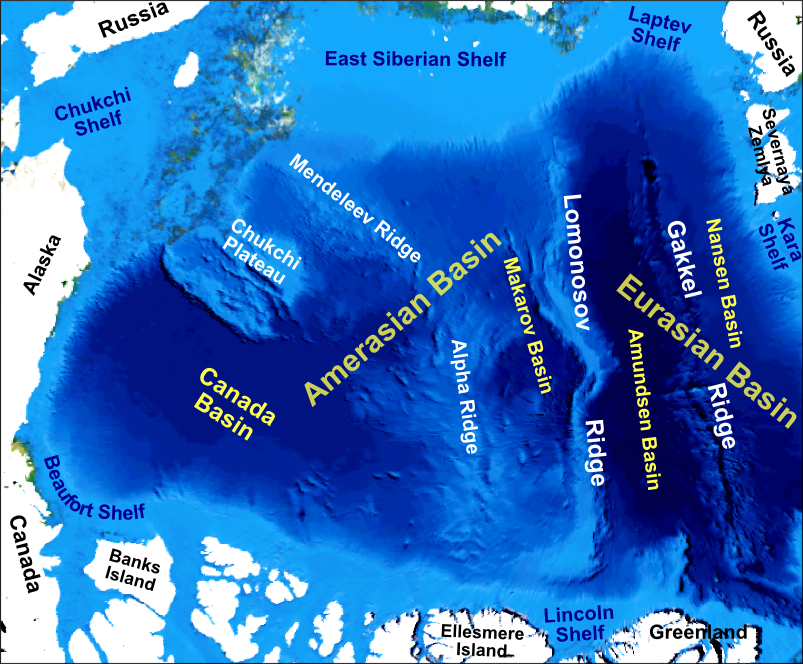“The Russian government decided that a terminal for shipment of zinc and lead will be built in the archipelago of Novaya Zemlya and the Seaport of Arkhangelsk will have its capacity tripled.”
Despite fighting in Ukraine and Western sanctions, Russia continues to push the expansion of its Northern Sea route’s capacity. According to the excerpted article from the Norway-based The Barents Observer, the Russian state’s push followed a significant investment in Arctic infrastructure development by sanctioned Russian oligarch Andrei Patrushev.[i] According to the article, Patrushev will take an ownership stake in the Archangelsk Seaport. Much of the shipping currently goes east to the Russian Far East and China, but many non-European countries are expanding trade with Russia. In the past, President Putin set increased shipping goals for the North Sea Route which have been met. Still, this current goal to increase from 34 million metric tons to 83 million metric tons is quite ambitious. Who the intended customers are, where the demand exists, and what type of goods are still unknown. Much of this cargo will continue to be LNG, coal, oil, timber, grain, and processed metals. Indeed, Russia is investing in its north for the long term, and the Patrushev family seems convinced that it is a good place to invest. Their financing, in tandem with state investment, may provide insight into the relationship between the oligarchs that keep Russia’s economy functioning and the Russian political state.
Sources:
Atle Staalesen, “Following Andrei Patrushev’s infrastructure investment comes a major government development plan for seaports in Arkhangelsk and Novaya Zemlya,” The Barents Observer (independent Norwegian news site in Russian and English currently blocked in Russia), 2 October 2023. https://thebarentsobserver.com/en/industry-and-energy/2023/10/following-andrei-patrushevs-infrastructure-investment-comes-major
The Russian government decided that a terminal for shipment of zinc and lead will be built in the archipelago of Novaya Zemlya and the Seaport of Arkhangelsk will have its capacity tripled. “The Government continues to systematically develop the Northern Sea Route,” Prime Minister Mikhail Mishustin underlined this week as he presented a new infrastructure plan for the north Russian region of Arkhangelsk.
According to the document, the local seaport will have its capacity tripled by 2035. While it handled 6,5 million tons of goods in 2022, it will be able to handle 25 million tons in 2040. This should involve major dredging operations in the Northern Dvina river and improved railway connections to the seaport. The construction of the new terminal will be started no later than 2026 and it is to be completed in 2031. The key commodities for the new port in Arkhangelsk will be zinc and lead concentrates. The plan also includes the construction of a terminal in Novaya Zemlya, which is to be ready for operations in 2026. The construction of the new infrastructure will be covered by non-budgetary funds.
The terminal in the far northern and heavily-militarised archipelago has been under planning for several years. It is due to be built in the Bezimyannaya Bay, not far from the local nuclear weapon test sites. It will handle ores and concentrate from the Pavlovskoye mine. State nuclear power company Rosatom and its subsidiary First Ore Mining Company are behind the project.
The Russian government’s approval of the infrastructure plan comes only few months after Andrei Patrushev acquired an ownership stake in the Seaport of Arkhangelsk. Andrei Patrushev is the son of Russian national security strongman Nikolai Patrushev.
In early 2023, Patrushev bought a 10 percent stake in the seaport. With the acquisition, Patrushev teamed up with port owners TD Bulat-SBS, Investment Industrial Partner and Vaiz Invest. The latter reportedly controls 60 percent of the port.
Andrei Patrushev is the youngest son of Nikolai Patrushev, the Russian Security Council Secretary. The Patrushev family is closely associated with the FSB. Andrei Patrushev is a major owner of the Gazprom Shelf Project, a company that has management responsibility for several of Russia’s best Arctic drilling rigs and vessels. He also controls a major share of Arctic exploration company Marine Arctic Geo Exploration Expedition (MAGE).
Arkhangelsk is one of Russia’s biggest Arctic seaports. It is extensively used for shipments of goods and construction materials to far northern industrial projects like the Syradasayskoye coal field and Rosneft’s Vostok Oil.As the new federal plan was approved in Moscow, a Chinese cargo ship loaded forestry products from the terminal. According to regional Governor Aleksandr Tsybulsky, Chinese furniture manufacturers are ready to start shipping up to one million cubic meters of wood products on the Northern Sea Route. The first shipload includes 300 containers sent on the Chinese ship Xin Xin Hai 1
Notes:
[i] See: “The West has imposed a barrage of sanctions on top Russian figures. See how they’re connected to Putin,” The Washington Post, 15 March 2022. https://www.washingtonpost.com/national-security/2022/03/15/putin-inner-circle-russia/ and the official U.S. government notice; U.S. Treasury Announces Unprecedented & Expansive Sanctions Against Russia, Imposing Swift and Severe Economic Costs, U.S. Department of the Treasury, Press Release, 24 February 2022. https://home.treasury.gov/news/press-releases/jy0608



![In Kamchatka, MiG-31 [RG1] fighters of the Pacific Fleet worked out the interception of a mock enemy cruise missile (Author’s note: In spite of the Russian description, the MiG-31 looks to be air-to-air refueling).](https://hg2wordpressfmsostor01.z2.web.core.usgovcloudapi.net/OE Watch Issues/2023-06/Grau-01-MiG-31-fighters-of-the-Pacific-Fleet.jpeg)
